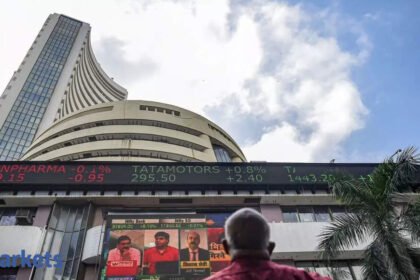In an insightful conversation, Gautam Kaul, Senior Fund Manager – Fixed Income at Bandhan AMC, breaks down how duration plays a critical role in enhancing returns during a falling rate environment.
From the mechanics of price sensitivity to strategy shifts for various investor profiles, Kaul offers a clear roadmap for navigating bond markets in a changing rate cycle. Edited Excerpts –
Kshitij Anand: For investors, especially retail ones, could you give them a small masterclass on how rate cuts affect investor demand for different tenures of corporate bonds? I’m sure a lot of new investors—or the Gen Z ones, you could say—might not relate much to how bonds work. There’s often more fear than accurate knowledge. So, if you could simplify this equation for them, that would be really great.
Gautam Kaul: When you’re investing in any fixed income instrument, there are two broad risks that you are exposed to—duration and rating. Rating refers to the credit risk associated with the bond. Duration refers to the weighted average maturity of all the bond’s cash flows.
To simplify, the sensitivity of a bond’s price to interest rate movement is measured by its duration. For example, if a bond has a duration of one, then for a 1% change in yields, the price of the bond will rise or fall by 1%.
Similarly, if the bond has a duration of 10, a 1% change in interest rates would cause a 10% change in the bond price—plus or minus. There’s a bit of nuance to this, but that’s the basic principle.Why is this important? Because when interest rates rise or fall, the mark-to-market (MTM) impact on your portfolio is governed by the bond’s duration. Bond returns come from two components: the coupon (or carry) and the MTM impact. Unless you are holding a bond till maturity, your holding period return consists of the coupon you earn—typically the bulk of the return and accrued daily—and any MTM gain or loss.So, taking our earlier example: if your bond has a duration of one and interest rates drop by 1%, you will gain 1% from the MTM, in addition to your regular coupon. If you sell at that point, that MTM gain is realized.
When we talk to investors about fixed income, we encourage them to look at two risks: duration risk, which drives the volatility of a bond fund, and credit risk. These are the key parameters you should evaluate before choosing which funds to invest in.
SEBI has helped here through its categorization framework. For example, liquid funds cannot invest in instruments with maturities beyond 90 days; low-duration funds are capped at one year; short-term funds have defined duration bands. So, investors get a clear idea of the maximum and minimum duration risk a fund may carry.
For example, short-term funds must maintain a Macaulay duration between one and three. So, in that case, for a 1% change in interest rates, your MTM impact could range from 1% to 3%.
Earlier, it was relatively easy to assess the duration risk of a portfolio but much harder to assess credit risk. You had to dig into fact sheets and manually check the ratings of every holding. But a few years ago, SEBI introduced the Potential Risk Class (PRC) matrix—a simple yet powerful tool.
It requires every fixed income fund to define the maximum level of duration risk and credit risk it can take.
For example, if a fund declares itself as PRC “A” on credit risk, that means the fund’s average portfolio rating will be at least AAA at all times. If it’s PRC “B,” then the average rating must be at least AA.
This gives the investor a clear sense of the maximum credit and duration risks associated with the fund—two of the most critical parameters when investing in fixed income.
So, if you do nothing else, just look at the PRC classification. It gives you a reliable, forward-looking measure of the fund’s risk profile.
Kshitij Anand: Apart from that, looking at the industry more broadly—do you see the Indian bond market emerging as a relatively safe haven amid the global debt uncertainty?
Gautam Kaul: Oh yes, absolutely. In fact, I’d say India is, if not unique, certainly one of the few economies that offers both macroeconomic stability and high yields.
To give some context—long-term fixed income investors are primarily trying to preserve the purchasing power of their money. That means earning returns that beat inflation, which is the holy grail. Achieving that consistently requires macro stability: low fiscal deficit, low and stable inflation, and ideally a manageable current account deficit.
India ticks all those boxes. Our current account deficit is low and stable. We’re less exposed to tariffs compared to economies like Southeast Asia or China, which rely heavily on manufacturing exports. Our exports are predominantly services-based, which are more insulated from global tariff issues.
Inflation is also well under control—lower than the RBI’s forecast and well below its upper tolerance level. The government has been fiscally responsible, reducing the fiscal deficit year after year (except during the COVID period, where even then, spending was targeted and controlled). They’ve also committed to bringing down the debt-to-GDP ratio over time.
These are exactly the metrics that any global fixed income allocator looks at. As a result, global investors have already started viewing India as a fixed income haven, even before our inclusion in the JP Morgan bond index.
Just consider this example: If you compare two countries—one where the fiscal deficit is rising from 5.5% to 6.5-7%, and another where it’s falling from 5.5% to 4.5%—you’d assume the latter is a developed market and the former an emerging one. But in India’s case, it’s the opposite. That speaks volumes about our policy strength.
And all of this hasn’t happened by accident—it’s the result of deliberate, disciplined policy decisions. For a global fixed income allocator, this signals a stable environment with attractive returns.
Another key point: foreign ownership of Indian government bonds is still quite low—even post JP Morgan inclusion, it’s under 3%. For comparison, many other emerging markets have foreign ownership ranging between 5-15%.
So yes, India offers an attractive macro landscape, a deep and growing market, and plenty of headroom for increased foreign participation. I believe we’re well-positioned to become a preferred destination for global fixed income allocations.
Kshitij Anand: Also, let me get your perspective on ESG — one of the key themes that has emerged in both equity and bond markets. Are investors assigning a valuation premium to companies issuing ESG-compliant bonds, and what is driving the growing popularity of these instruments?
Gautam Kaul: ESG as a movement — and the market attached to it — has gained significant traction and momentum in the West. In India, we are still at a very early stage of the entire ESG investing platform. Even within our landscape, equity is where we are seeing more traction compared to fixed income.
That said, we have seen some private corporates issuing ESG bonds. In fact, the Government of India also issues green bonds. So, there is a concerted effort, and of course, some demand for these instruments from specific segments.
From a fixed income perspective, the market is still nascent and developing. Most of the demand for ESG bonds currently comes from foreign investors rather than domestic ones.
I believe that as awareness grows, we could see ESG-dedicated funds in India as well — either from Indian or foreign investors — which could further drive investment in ESG bonds. There is great potential here, but we’re still in the early days.
Is the market paying a significant premium for ESG bonds? Selectively, yes. But it still needs to evolve into a more widespread and common practice.
For instance, the government’s borrowing cost for green bonds versus regular bonds isn’t very different — perhaps just a 5-basis point premium.
When green bonds were first introduced, our sense was that this premium — or “greenium,” as it’s called — could be much higher. That might still be the case in the future, given the early stage of the INR bond market.
(Disclaimer: Recommendations, suggestions, views, and opinions given by experts are their own. These do not represent the views of the Economic Times)







